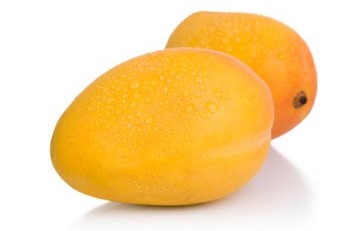Choosing A Healthy Cooking Oil!
How To Choose A Healthy Cooking Oil!
This is a delicate and controversial issue, involving complex scientific research which is still underway and emotions and geographical preferences and commercial interests of oil seed producers and the oil industry.
We have already seen in the ‘Heart Health Poster Boy Olive Oil Vs Groundnut Oil’ article on this website that the best oils nutritionally are groundnut oil for Indian style cooking and olive oil for Western type low temperature cooking or cold dressing oil.
Both oils are heart healthy and anti inflammatory oils.
***
All oils are principally made up of three kinds of fatty acids, viz. monounsaturated, saturated, and polyunsaturated fatty acids.
***
Monounsaturated fatty acids:
Monounsaturated fatty acids are healthy fats found in various nuts like groundnuts, almonds, cashews and hazelnuts and avocados and in olive and groundnut oils. They are liquid at room temperature but may start to solidify when chilled.
They can help reduce bad cholesterol (LDL) levels, lowering the risk of heart disease and stroke.
Some studies suggest they improve insulin sensitivity and help in managing blood sugar levels and that they may also help reduce inflammation, which is linked to chronic diseases like heart disease and diabetes.
Replacing saturated and trans fats in your food with monounsaturated fats can help prevent diabetes, heart disease and can promote better overall health.
***
Saturated fatty acids:
Oils rich in saturated fats are coconut, palm and palm kernel oils.
Saturated fats raise LDL cholesterol, which is harmful to heart health and their consumption leads to heart disease and strokes.
The saturated fatty acids in coconut oil have been portrayed by some to be a medium chain triglycerides (MCT) rich oil which is supposed to be absorbed directly in the portal vein and transported straight to the liver which uses it up immediately for energy and that it is not stored as fat, and hence it is said to be healthy.
This is true for a special formulation coconut oil composed of hundred per cent medium chain triglycerides, used as a special nutritional supplement for pre term, low birth weight babies and critically ill ICU patients, not for regular coconut oil. Regular, commercially available coconut oil is rich in lauric acid and other saturated fatty acids, which function as long chain triglycerides and are absorbed slowly and raise the LDL cholesterol levels leading to heart disease and strokes.
***
Polyunsaturated fatty acids:
Polyunsaturated fatty acids include the omega 6 and the omega 3 fatty acids.
Omega 6 (Linoleic) fatty acids trigger inflammatory processes in the body causing damage to tissues and vital organs while omega 3 (Linolenic) fatty acids reduce the inflammatory processes and protect the tissues and vital organs from inflammatory damage.
Thus oils rich in the omega 6 oils lead to diabetes, hypertension, heart disease and strokes while fats rich in omega 3 protect us from these diseases.
***
Monounsaturated fatty acids to polyunsaturated fatty acids ratio:
A high monounsaturated fatty acids to polyunsaturated fatty acids ratio oils help lower total cholesterol and the bad cholesterol, the LDL cholesterol and increase the good cholesterol, the HDL cholesterol and also reduce the inflammatory processes in the body, thus protecting us from, diabetes, hypertension, heart disease and strokes.
***
Comparisons of various oils:
Safflower seed oil:
Safflower seed oil is low in monounsaturated (oleic) fatty acids, 15 per cent, very high in omega 6 (Linoleic) fatty acids, 77 per cent and has zero omega 3 (Linolenic) fatty acids.
Thus it has a very bad monounsaturated fatty acids to polyunsaturated fatty acids ratio and completely lacs omega 3 (Linolenic) fatty acids.
Sunflower seed oil:
Sunflower seed oil is low in monounsaturated (oleic) fatty acids, 25 per cent, very high in omega 6 (Linoleic) fatty acids, 64 per cent and is very low in omega 3 (Linolenic) fatty acids, 0 to 3 per cent.
Thus it too has a bad monounsaturated fatty acids to polyunsaturated fatty acids ratio and completely or nearly completely lacs omega 3 (Linolenic) fatty acids.
Soy oil:
Soy oil is rich in omega 6 (Linoleic) fatty acids, 54 per cent and lower in monounsaturated (oleic) fatty acids, 23 per cent plus it has 10 per cent saturated fatty acids too.
Thus it has a bad monounsaturated fatty acids to polyunsaturated fatty acids ratio and also has substantial saturated fats.
Rice bran oil:
Rice bran oil has 41.4 per cent monounsaturated (oleic) fatty acids, about 35 per cent omega 6 (Linoleic) fatty acids and about 20 per cent saturated fatty acids.
Thus it doesn’t have a high monounsaturated fatty acids to polyunsaturated fatty acids ratio and is also high in saturated fatty acids.
Cotton seed oil:
Cotton seed oil is rich in omega 6 (Linoleic) fatty acids, 55 per cent, low in monounsaturated (oleic) fatty acids, 17 per cent and high in saturated fatty acids, 22 to 29 per cent.
Thus it has a bad monounsaturated fatty acids to polyunsaturated fatty acids ratio and is also high in saturated fatty acids.
Sesame oil:
Sesame oil has 43 per cent each monounsaturated and polyunsaturated fatty acids and 13 per cent saturated fatty acids.
Thus it too lacks a high monounsaturated to polyunsaturated fatty acids ratio.
Canola oil:
Canola oil has a very favourable fatty acid composition, about 57 to 65 per cent monounsaturated fatty acids, 17 to 21 omega 6 fatty acid, about 12 per cent omega 3 fatty acids and about 6 per cent saturated fatty acids.
But it comes from a genetically modified plant and is an industry manufactured oil.
Mustard oil:
Mustard oil in fact has a very good balance of the monounsaturated fatty acids to the polyunsaturated fatty acids (60 gm to 21 gm per 100 gm of oil) as well as the omega 6 to the plant source omega 3 or ALA (15 gm to 6 gm per 100 gm of oil ratio).
But it also has the erucic acid, an omega 6 fatty acid that has been connected to heart disease.
Also its pungent odour and taste are unacceptable to most people in our region.
Flaxseed oil:
Flaxseed oil has 9 gm saturated fatty acids, 18 gm monounsaturated fatty acids and almost 75 gm polyunsaturated fatty acids, of which 18 gm is omega 6 fatty acids and 55 to 58 gm plant source omega 3 or ALA fatty acids.
Thus it has a very poor monounsaturated to polyunsaturated fatty acids ratio, not very conducive to heart health.
Also the oil is easily oxidised when exposed to light, air and heat. Its smoking point is low, hence it is unsuitable to Indian style high temperature cooking and it has to stored in a refrigerator to prevent its oxidation.
It can at best be used as cold dressing oil as a small supplement to the main cooking oil.
***
Industry Manufactured Oils versus Cold Pressed Oils:
Industry manufactured oils like soya oil, rice bran oil, corn oil, sunflower oil, safflower seed oil (kardai), Canola oil, cottonseed oil are considered bad fats by many nutritionists.
The use of heat and chemicals in extracting and refining these oils alters their fatty acid structures and trans fats and other toxic substances are developed in them, turning them unhealthy.
Cold pressed oils in contrast retain the original fatty acids composition of their oil seeds.
Today many researchers are asking us to shun all industrially produced oils and recommend cold pressed oils.
***
Groundnut Oil and Olive Oil:
That leaves us with the choice of cold pressed groundnut oil and olive oil!
Both oils have similar ability to control inflammation.
Olive oil has a better monounsaturated to omega 6 polyunsaturated fatty acids than groundnut oil.
But olive oil which has a comparatively lower smoking point than groundnut oil cannot be considered as a premium cooking and frying oil for Indian style of cooking which involves deep frying.
Groundnut oil reportedly has greater oxidative stability and higher smoking point as compared to olive oil and has been considered as a premium cooking and frying oil as compared to olive oil. Gomez et. al., 2003 have shown that the phenolic compounds in extra virgin olive oil get damaged very quickly by heat along with a loss of Vitamin E.
The preliminary analysis of blood samples from people who have been consuming groundnut and olive oil since one year do not show any significant differences in the biochemical parameters assessed.
Only it is important to consume groundnut oil in moderation, to keep our omega 6 fatty acids consumption low.
But this is true of any other oil as excess oil consumption will also lead to obesity.
Studies have also shown that resveratrol, a phenolic antioxidant present in groundnuts reduces the risk of vascular disease caused by angiotensin a hormone that causes the arteries to contract and leads to raised blood pressure which damages the endothelial lining of the arteries leading to heart disease and strokes, amongst damage to other organs. Resveratrol also protects the arteries by increasing the vasodilator hormone, nitric oxide.
Groundnuts also are high in the powerful antioxidant, Vitamin E, which protects the cells of the mucosa and skin from the damage caused by oxygen free radicals.
Thus we can conclude that groundnut oil could be the better choice of oils for Indians, than olive oil, both nutritionally as well as economically.
***
In short, if you live in India and your oil consumption is moderate, you can safely use groundnut oil.
If you live in India and cook your food at low temperature and don’t mind spending extra money on your oil, or if you use oil only as salad dressing oil or cook your food at low temperature and live in the US or Europe, you can use olive oil.
***
Achieving a healthy balance of fatty acids:
Groundnut or olive oil do not provide us with sea source omega 3 fatty acids.
Sea source omega 3 fatty acids (DHA and EPA) are essential for the maintenance of heart, brain and eye health and in preventing inflammation associated with chronic disease like arthritis, asthma and some autoimmune disorders. They are also essential for the proper development of the foetal brain and eyes.
That is why it is important that we maintain a proper balance of healthy of fats in our food.
We can do so by consuming sea fish or omega 3 supplements twice or thrice a week to supplement the monounsaturated fatty acids provided by groundnut or olive oils.
Also read the articles ‘Heart Health Poster Boy Olive Oil Vs Groundnut Oil’, The Good And The Bad Fats’ and the ‘Basics Of Nutrition’ on this website.

















Leave a Reply